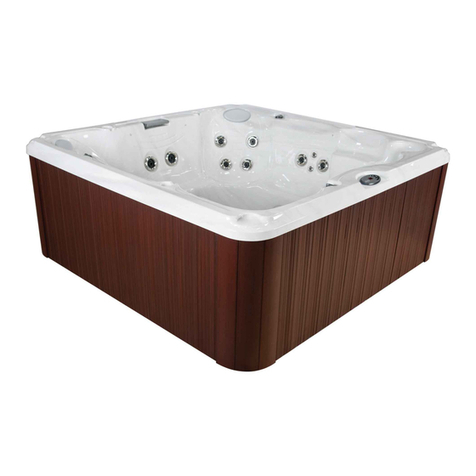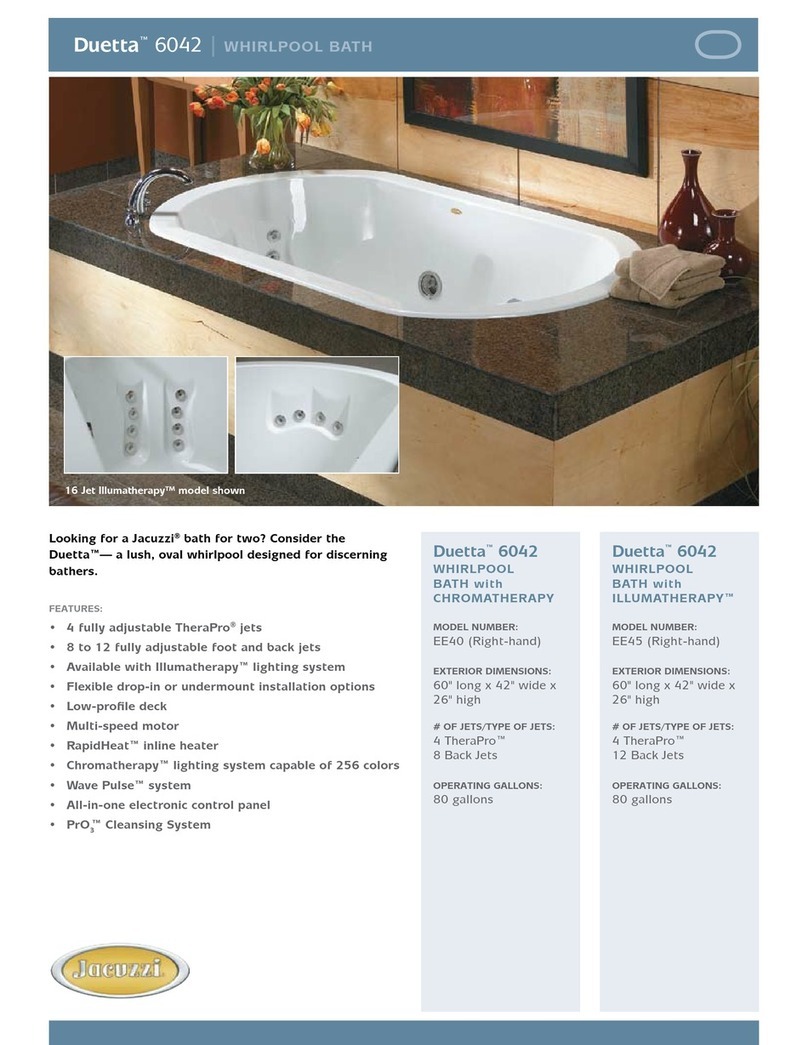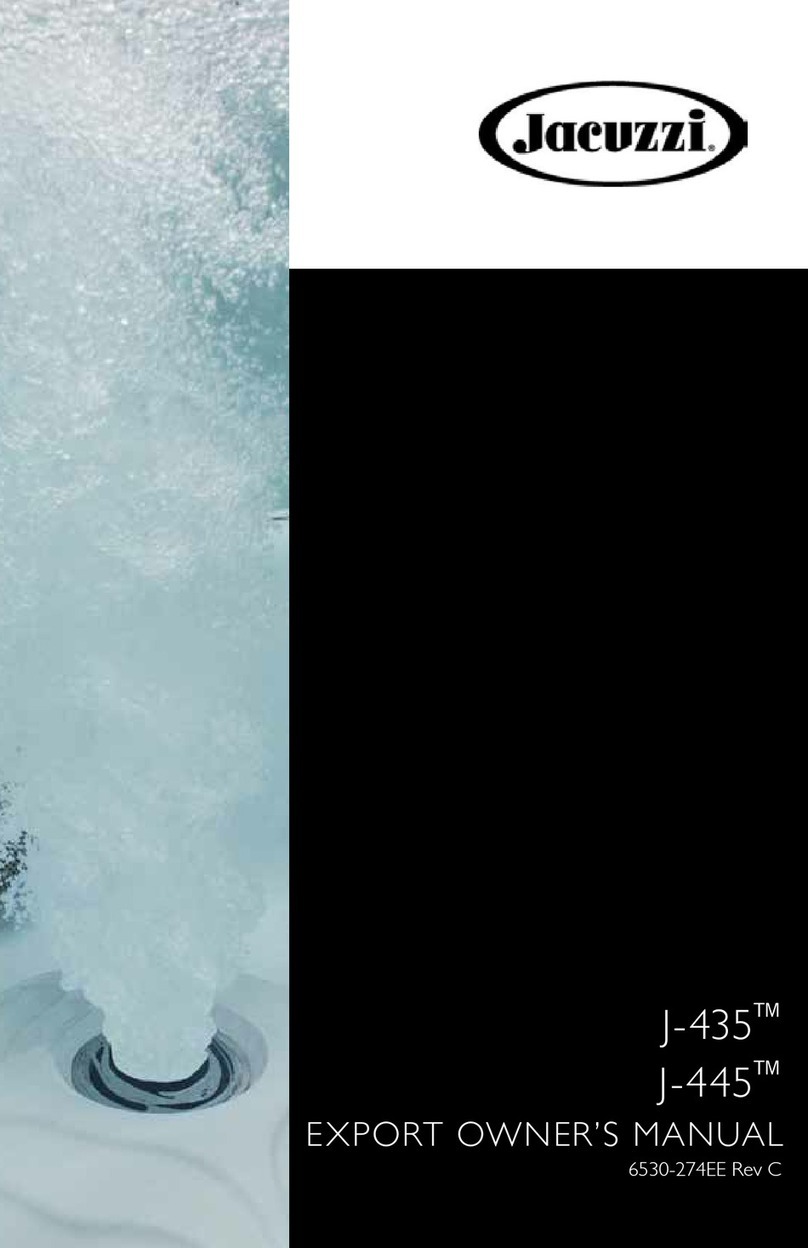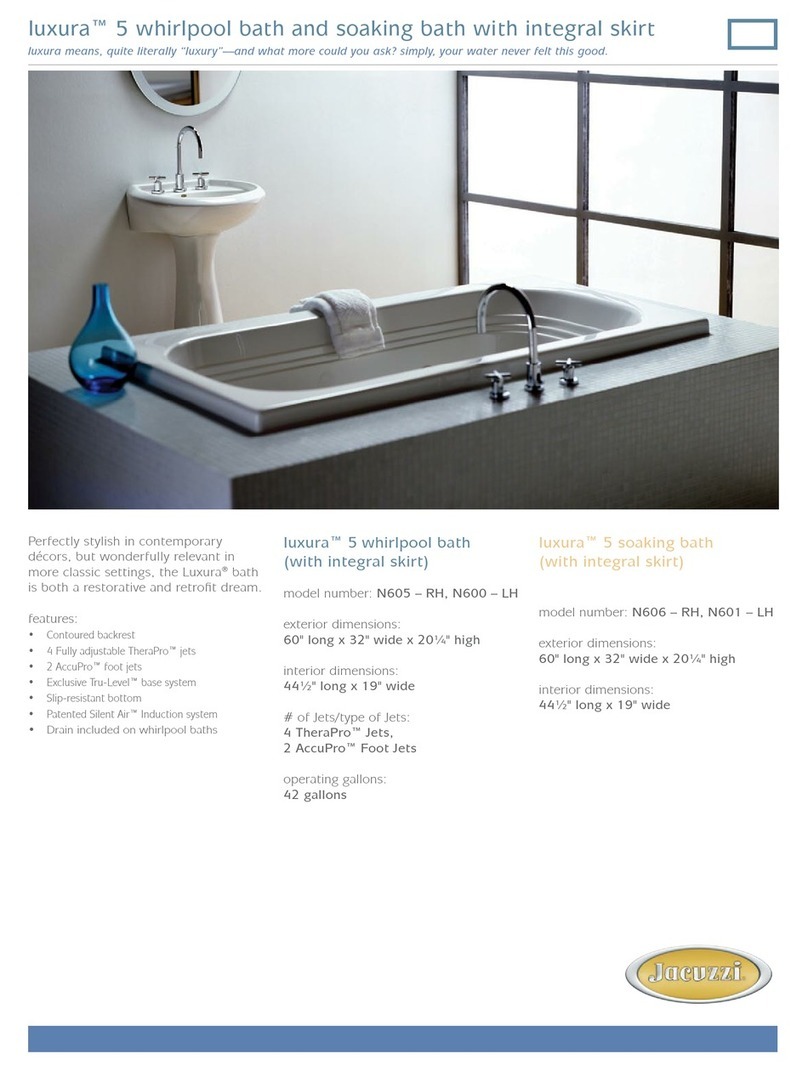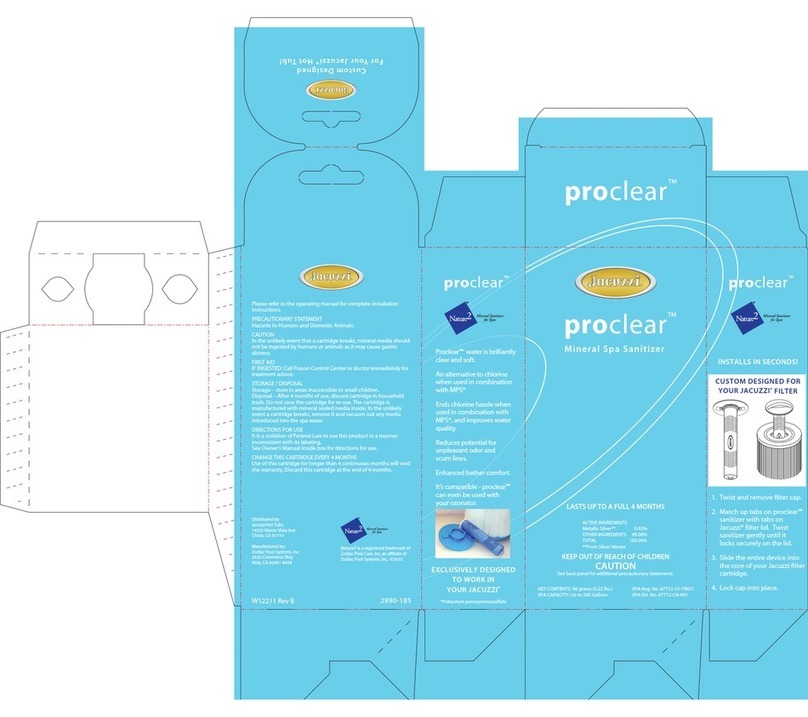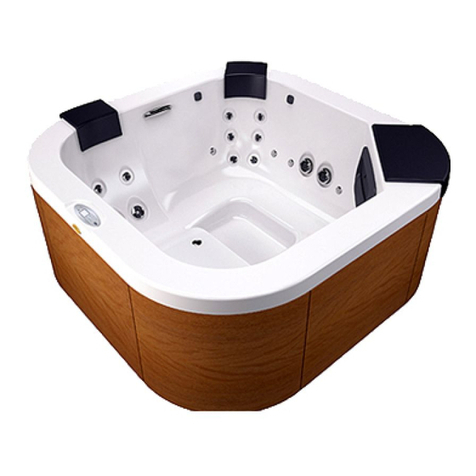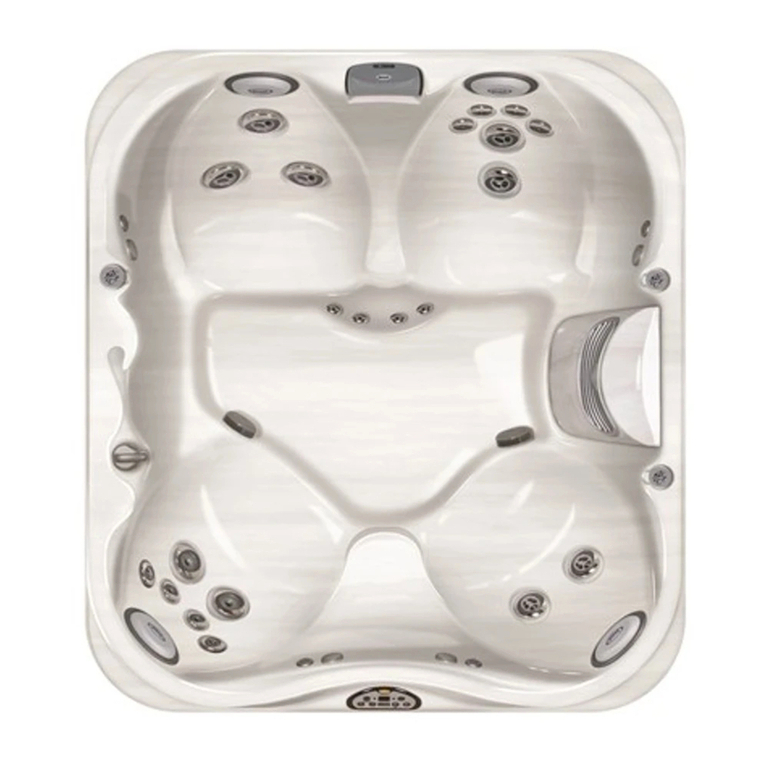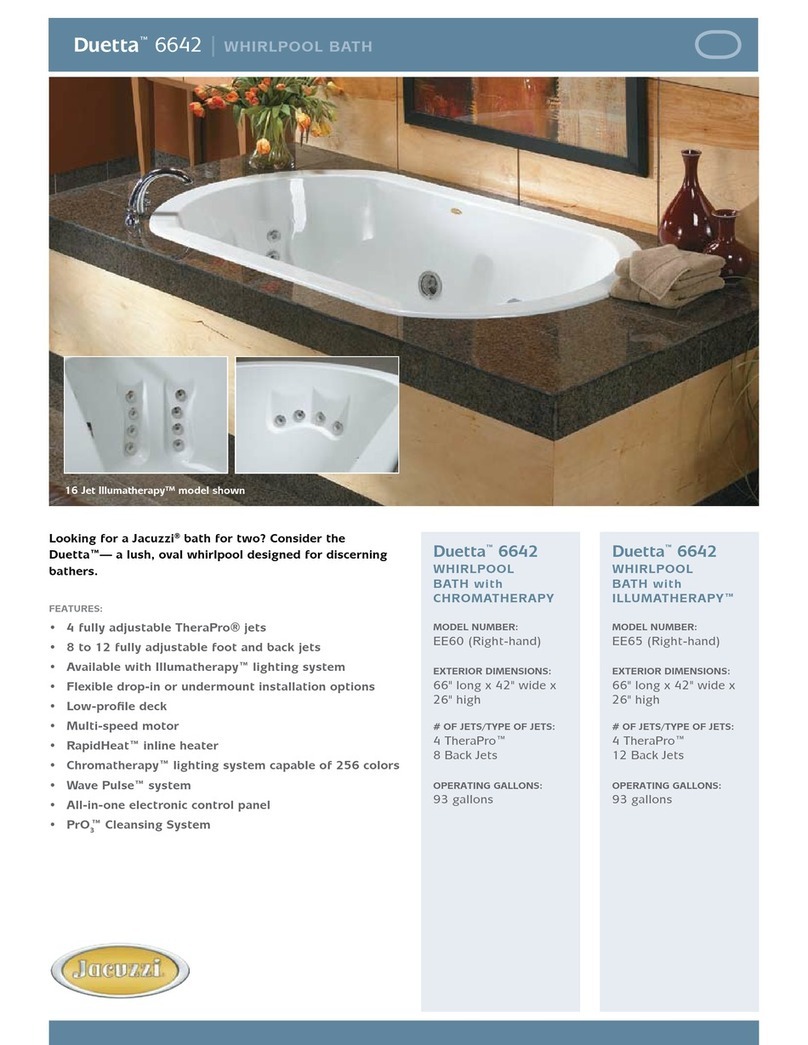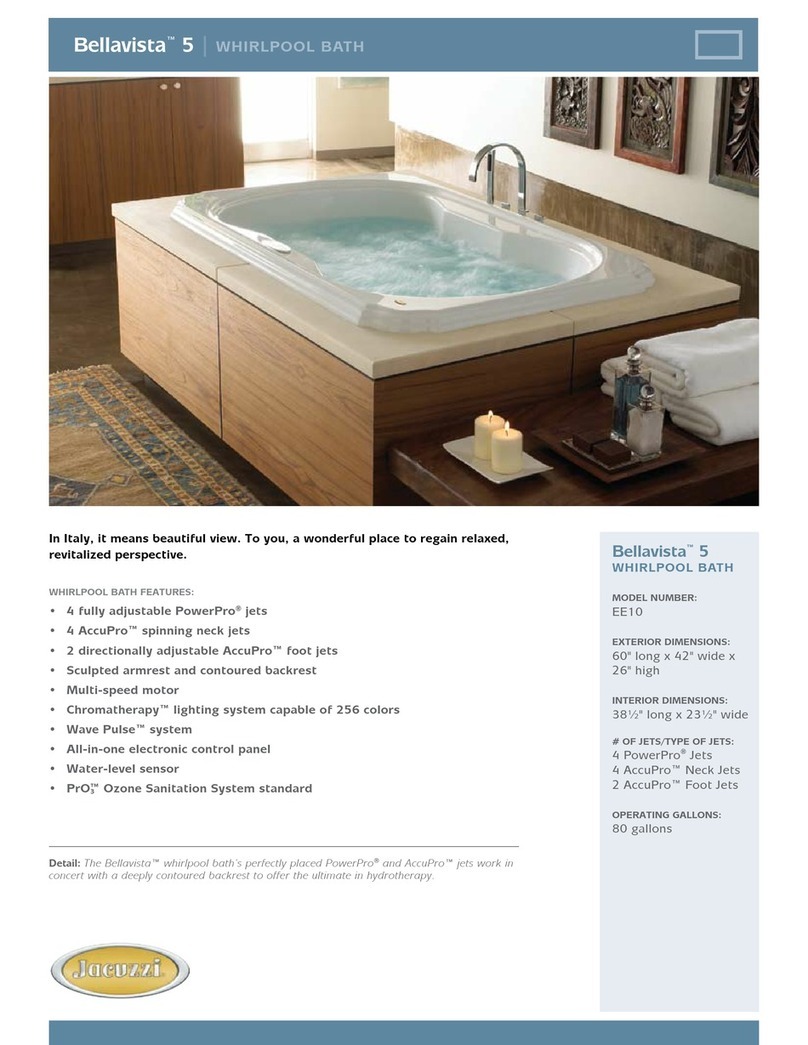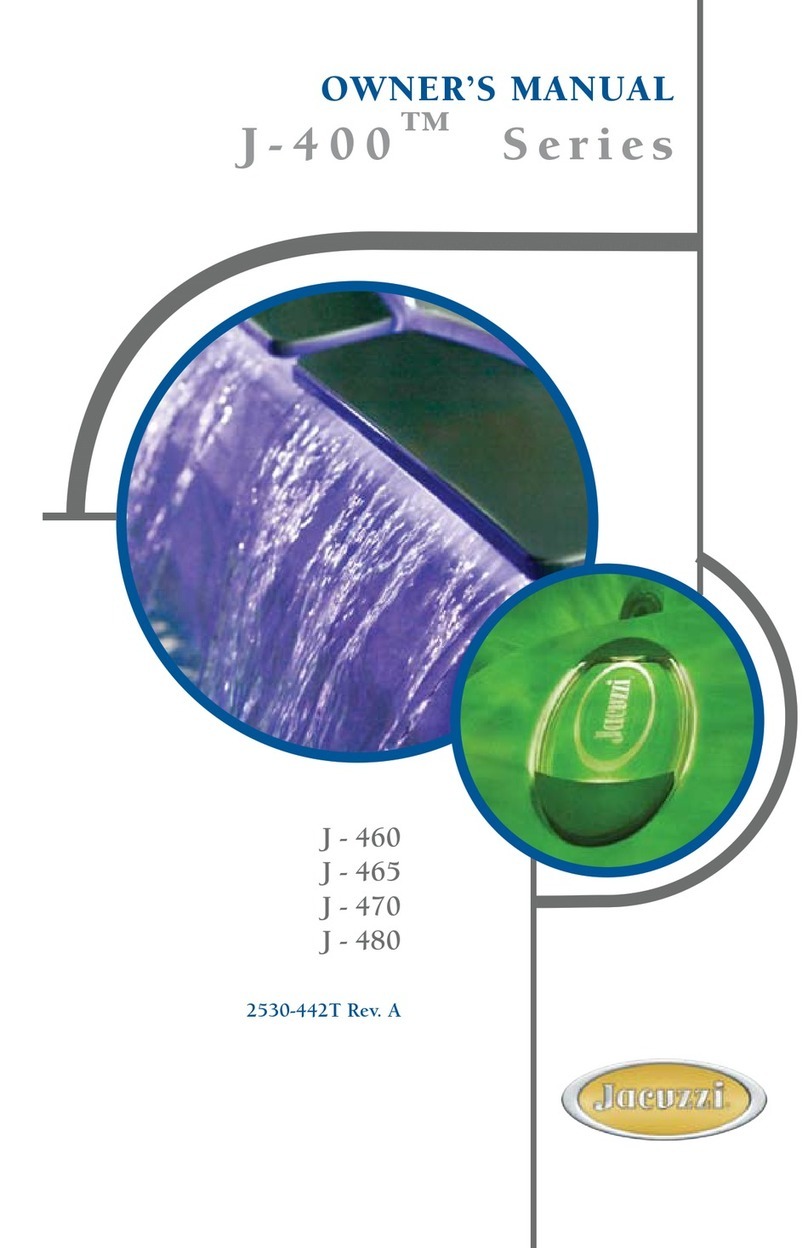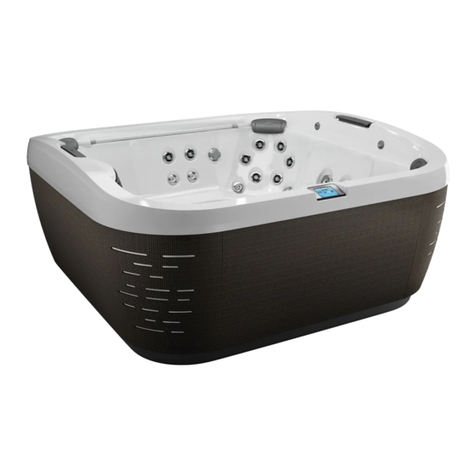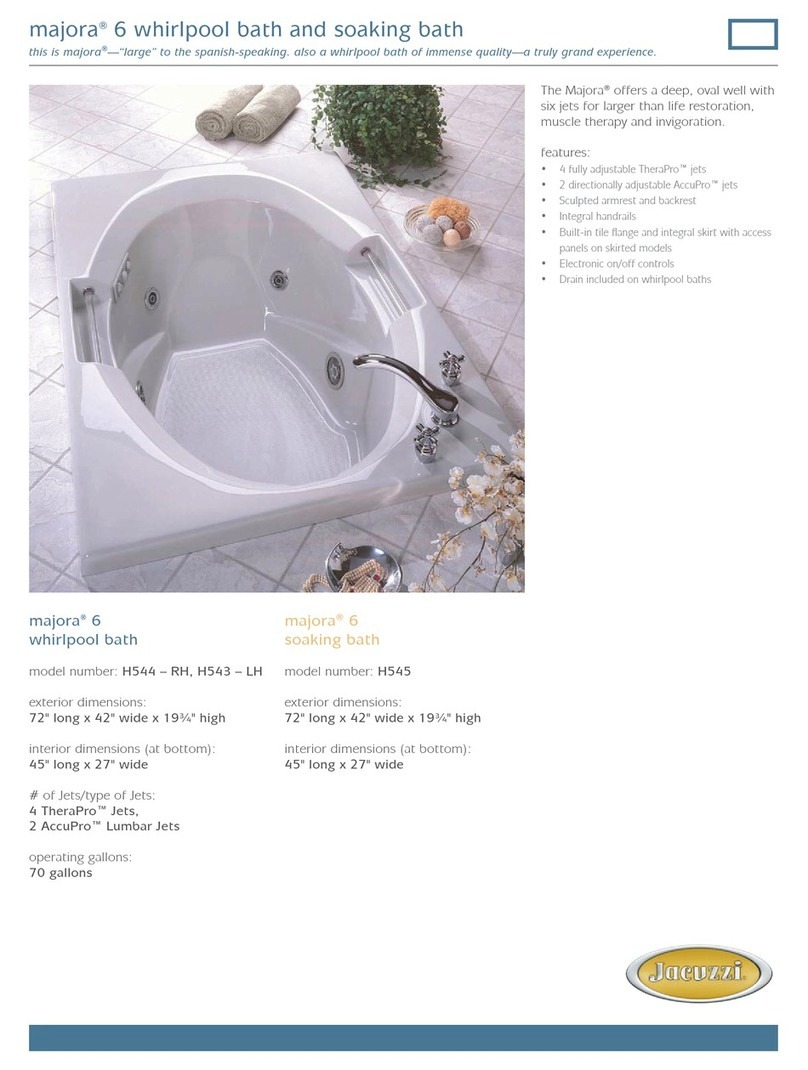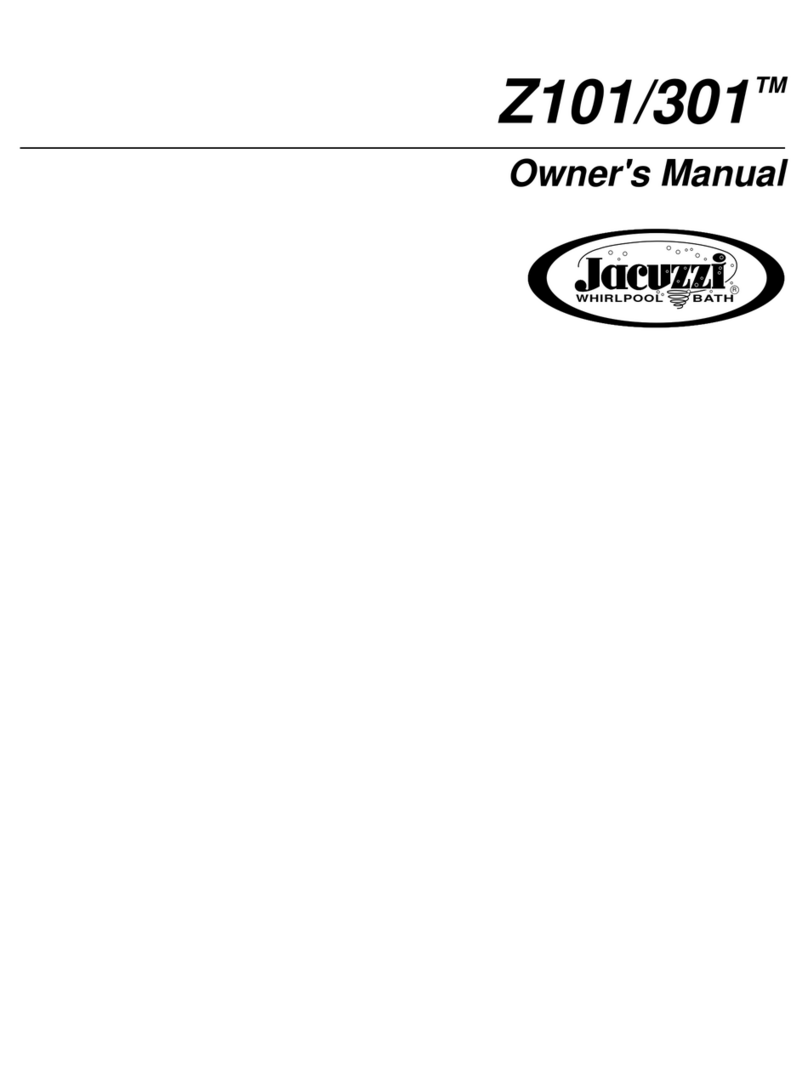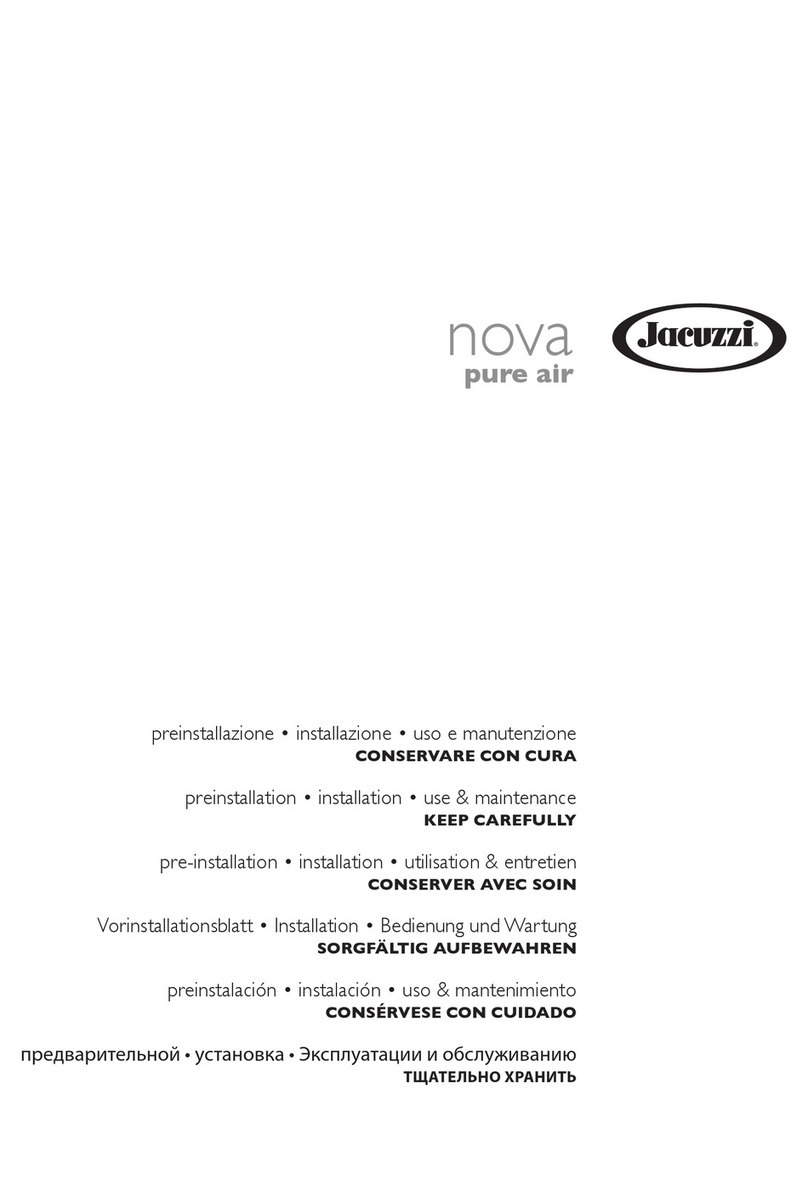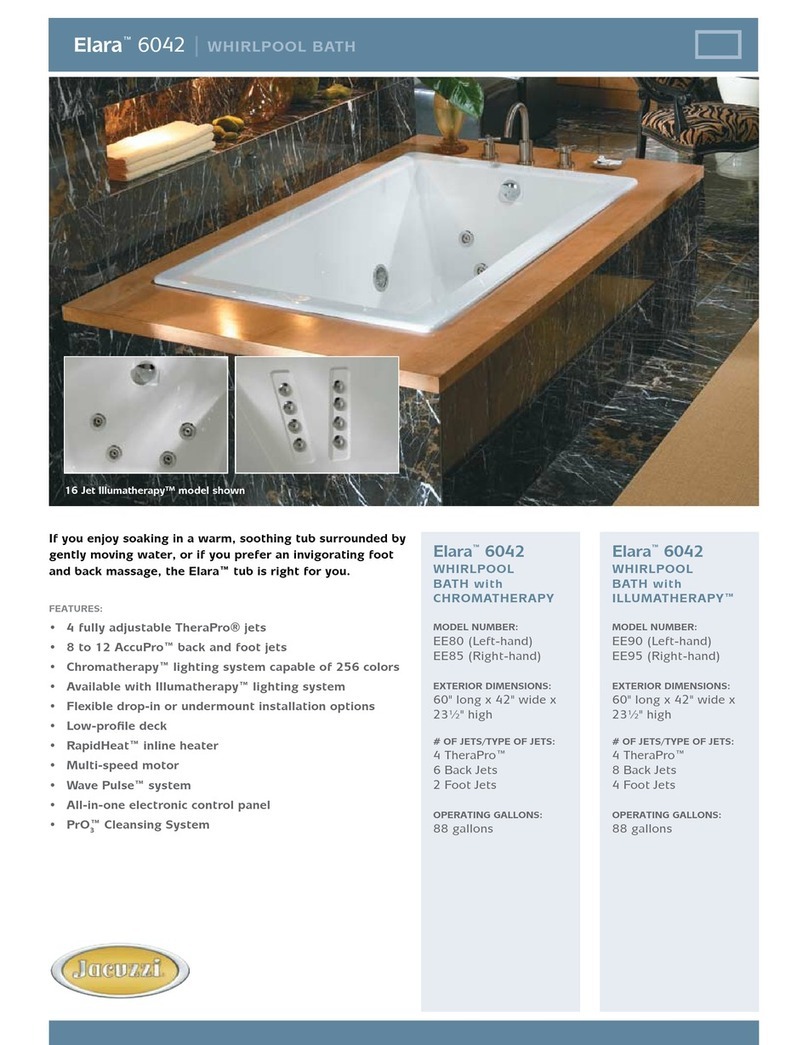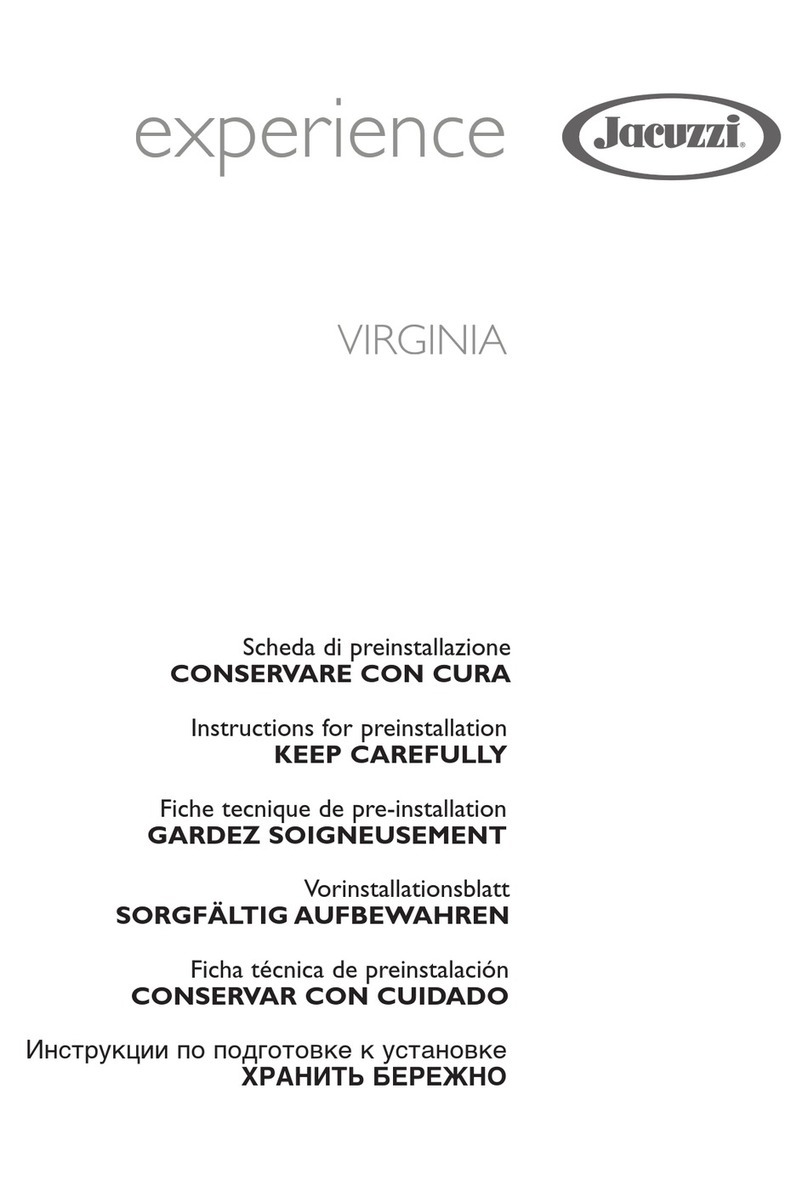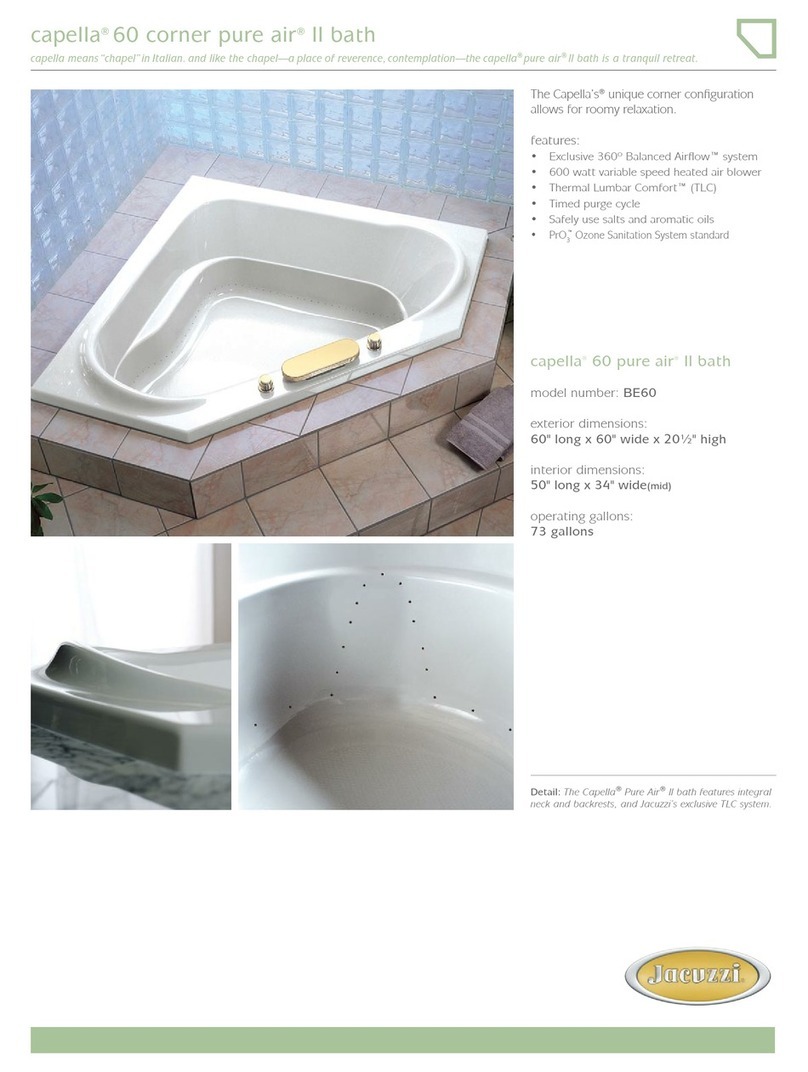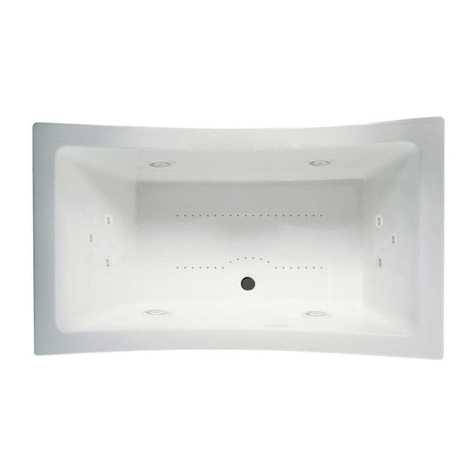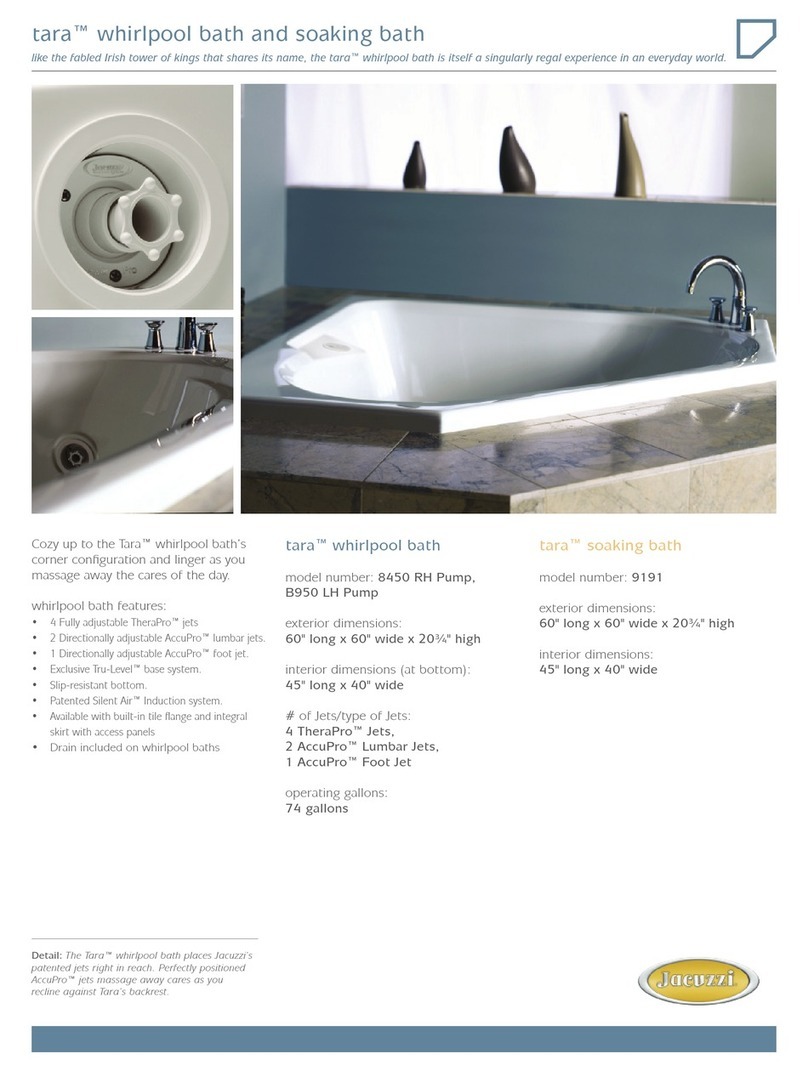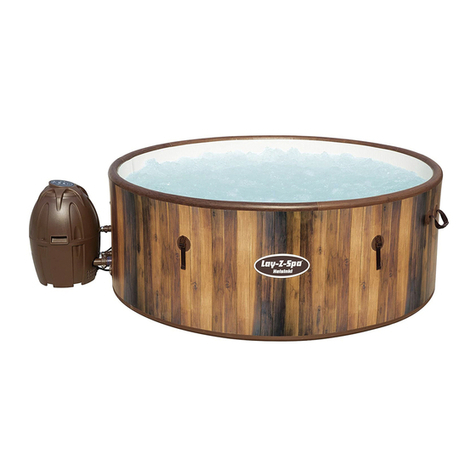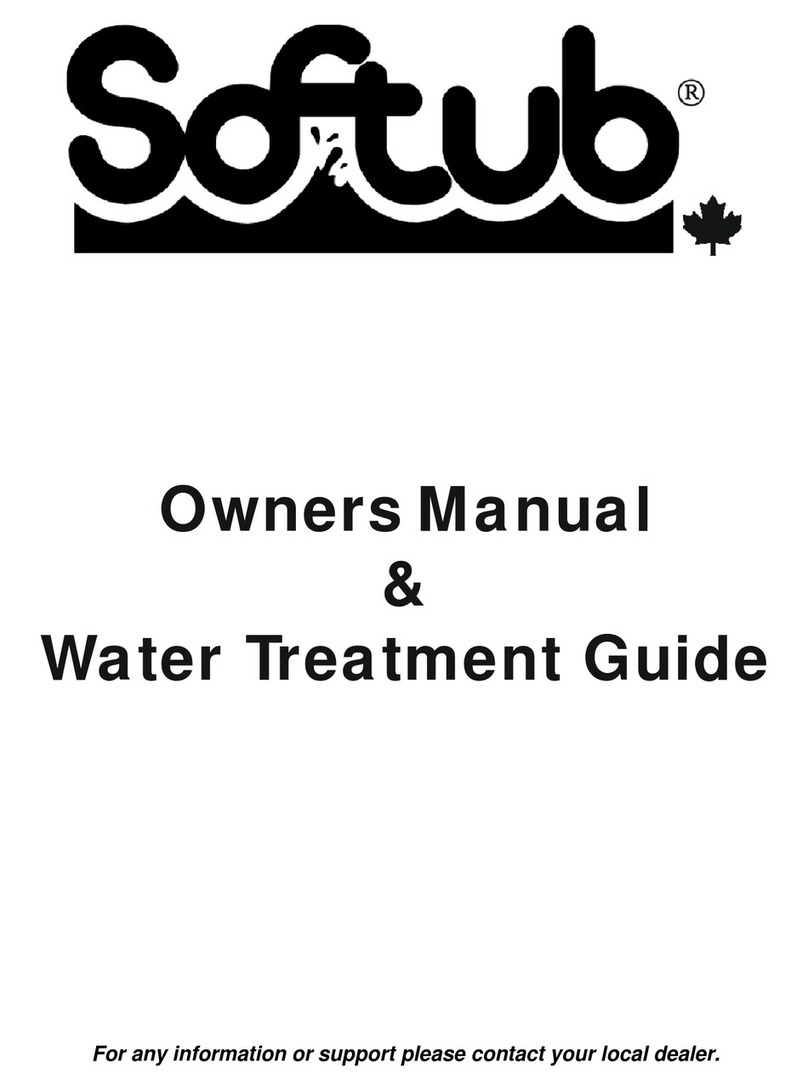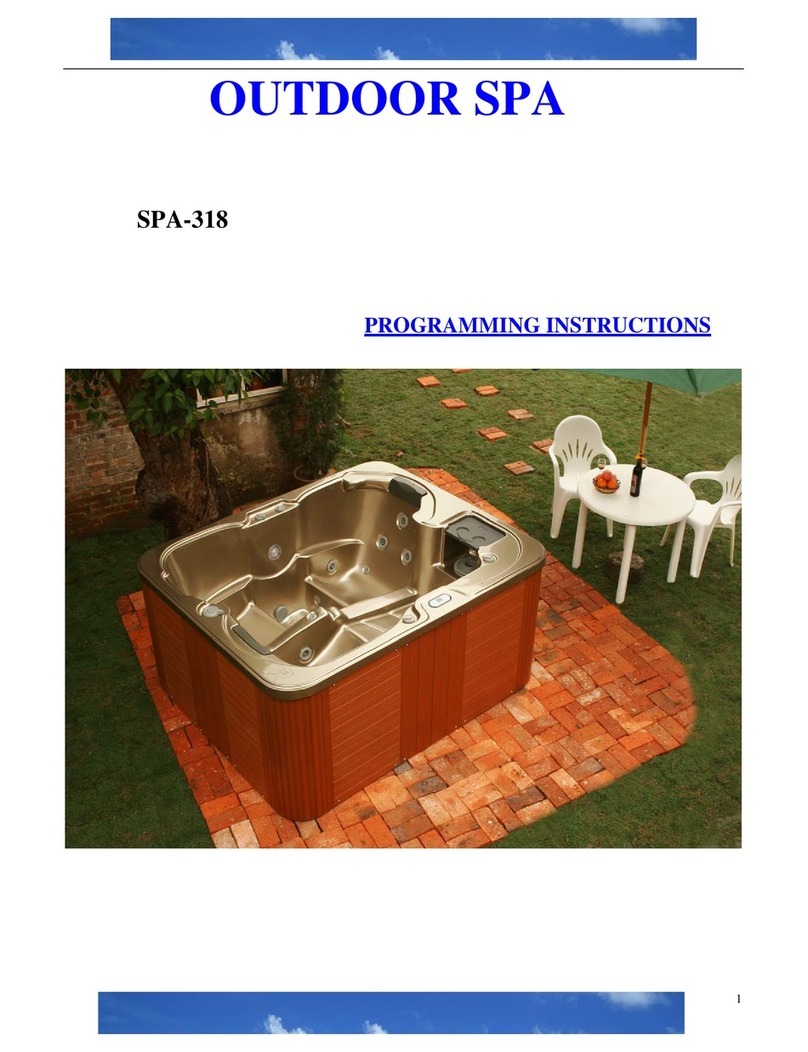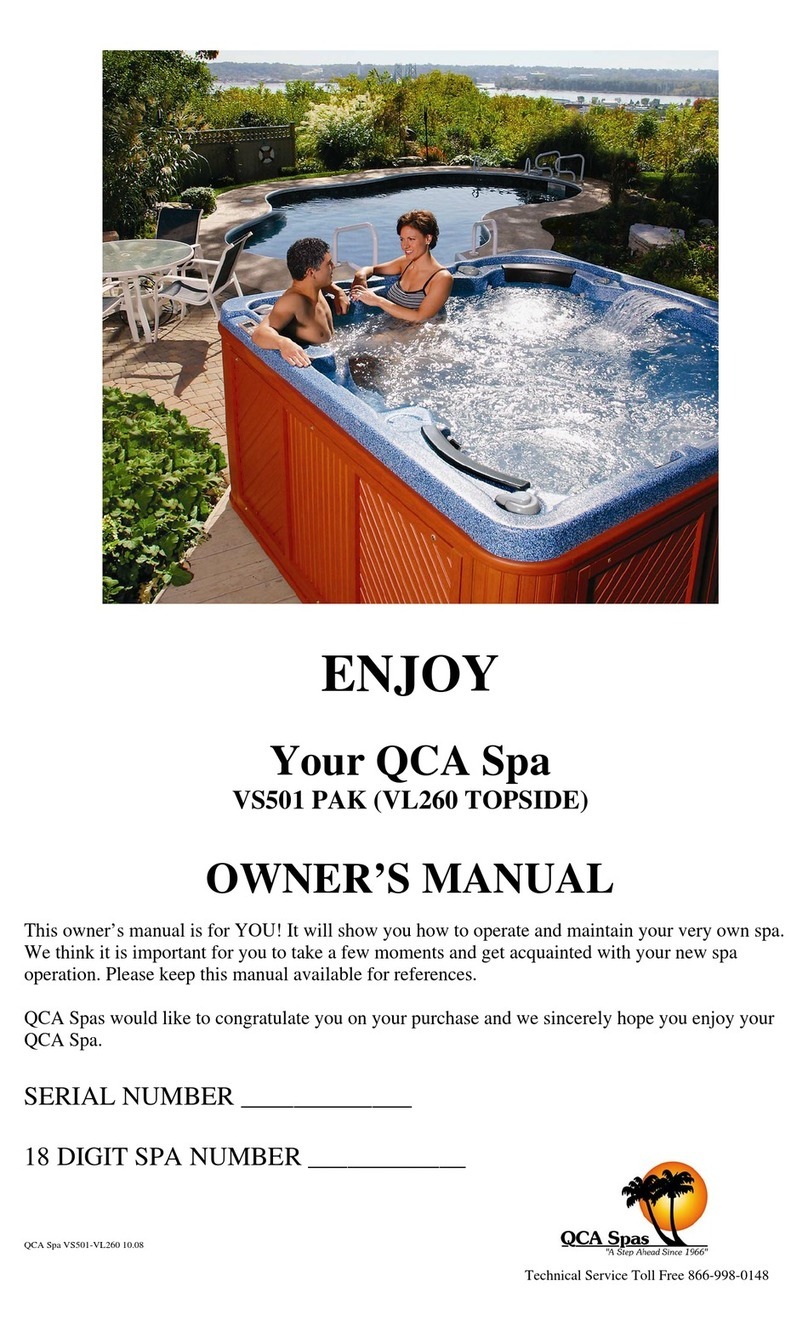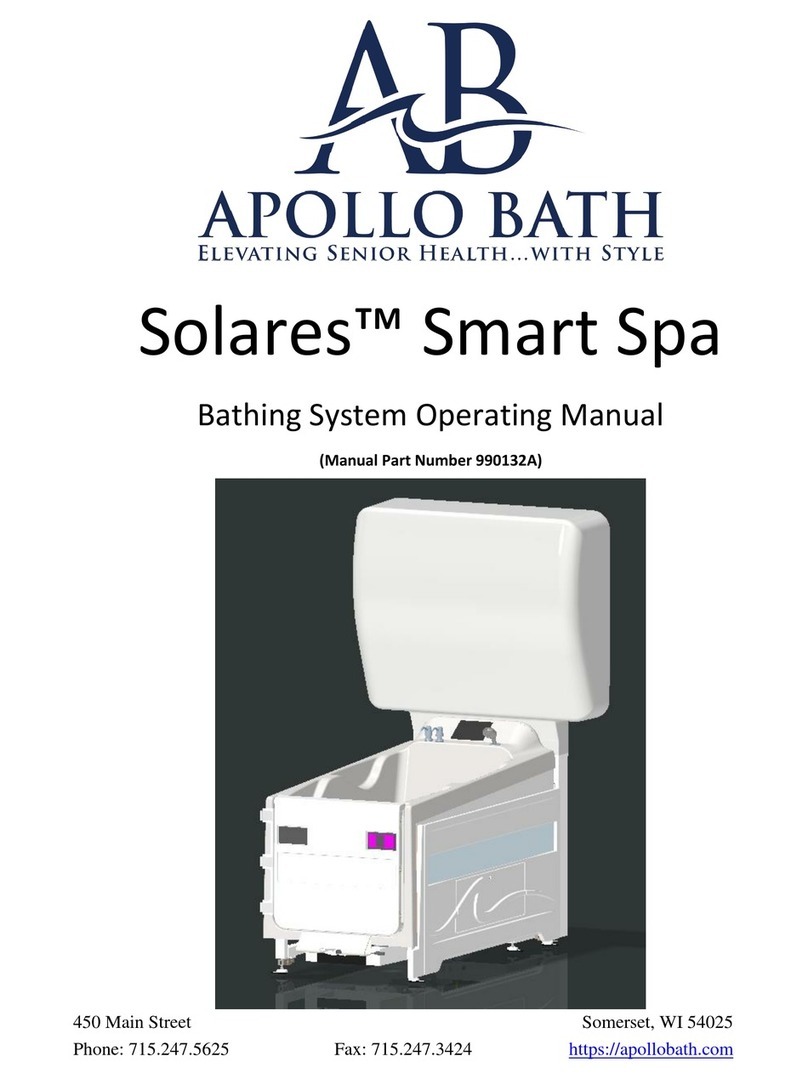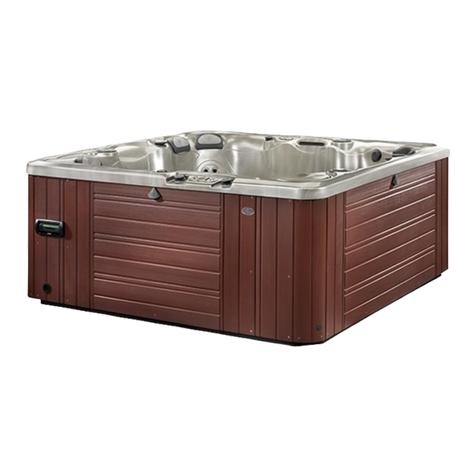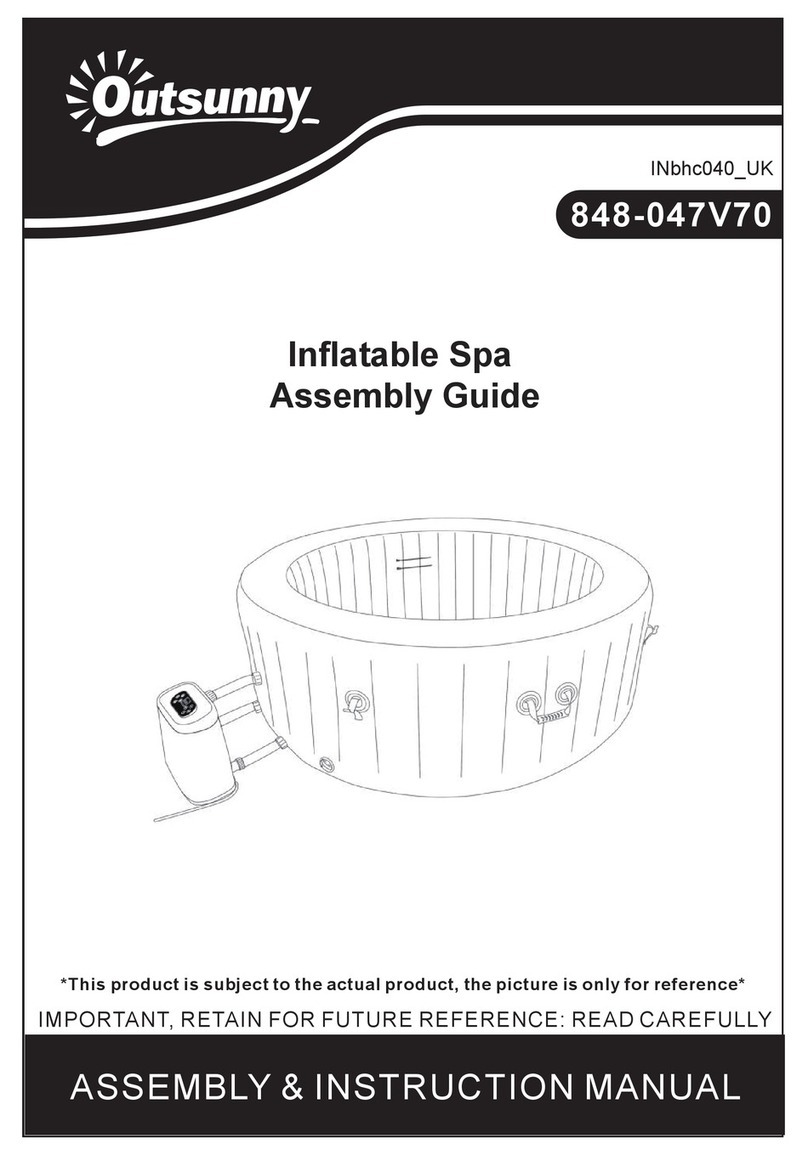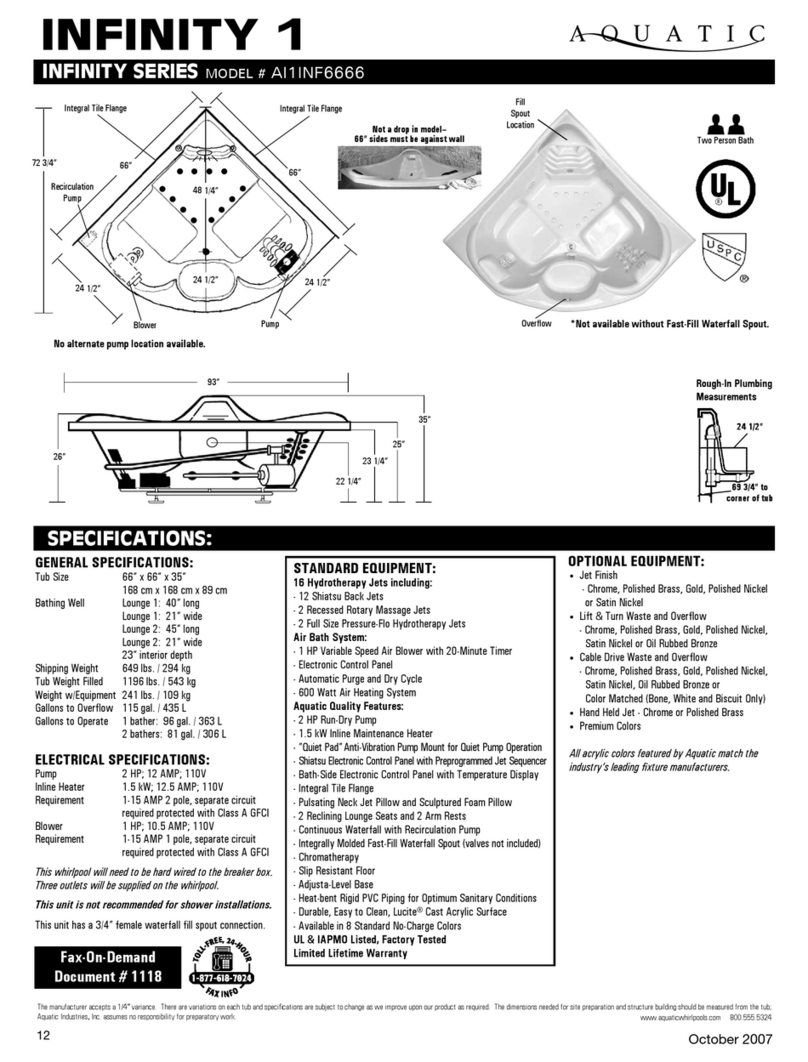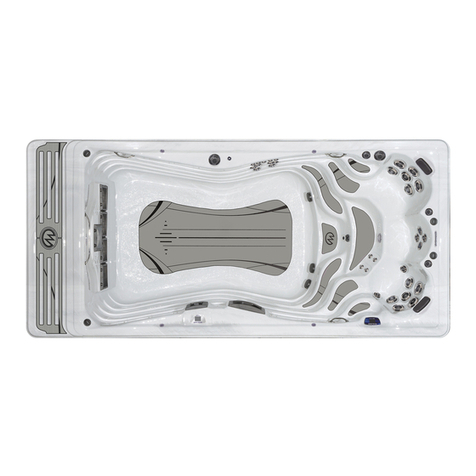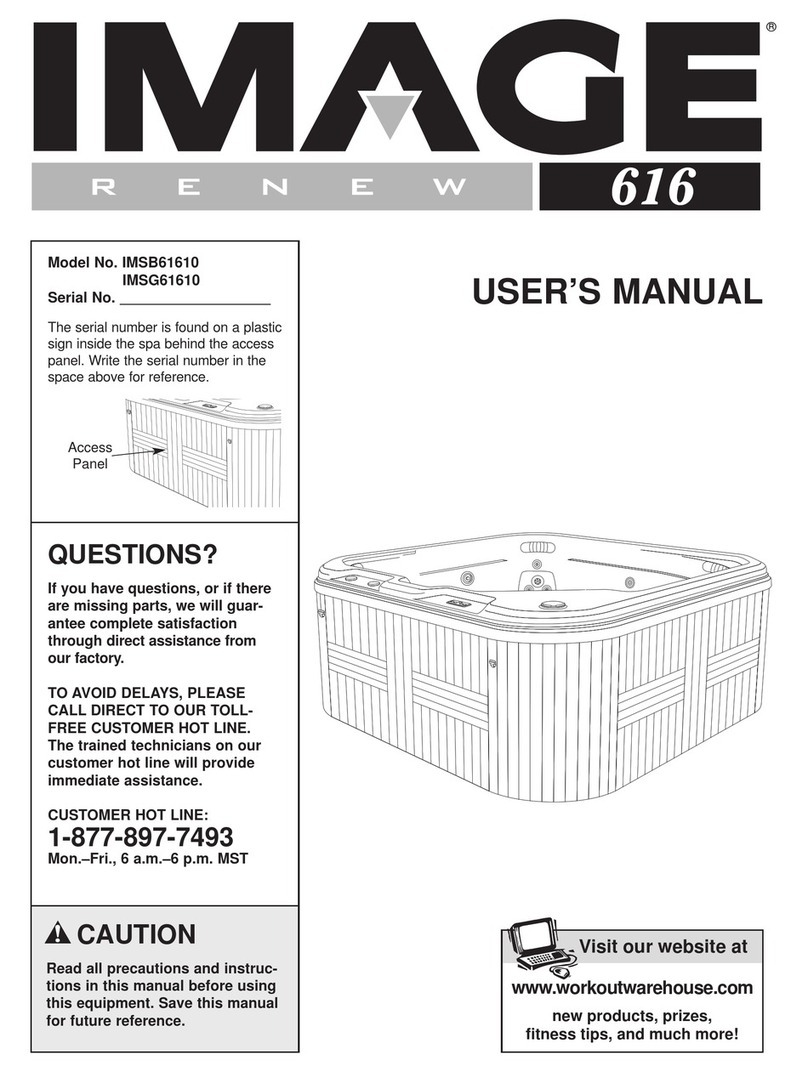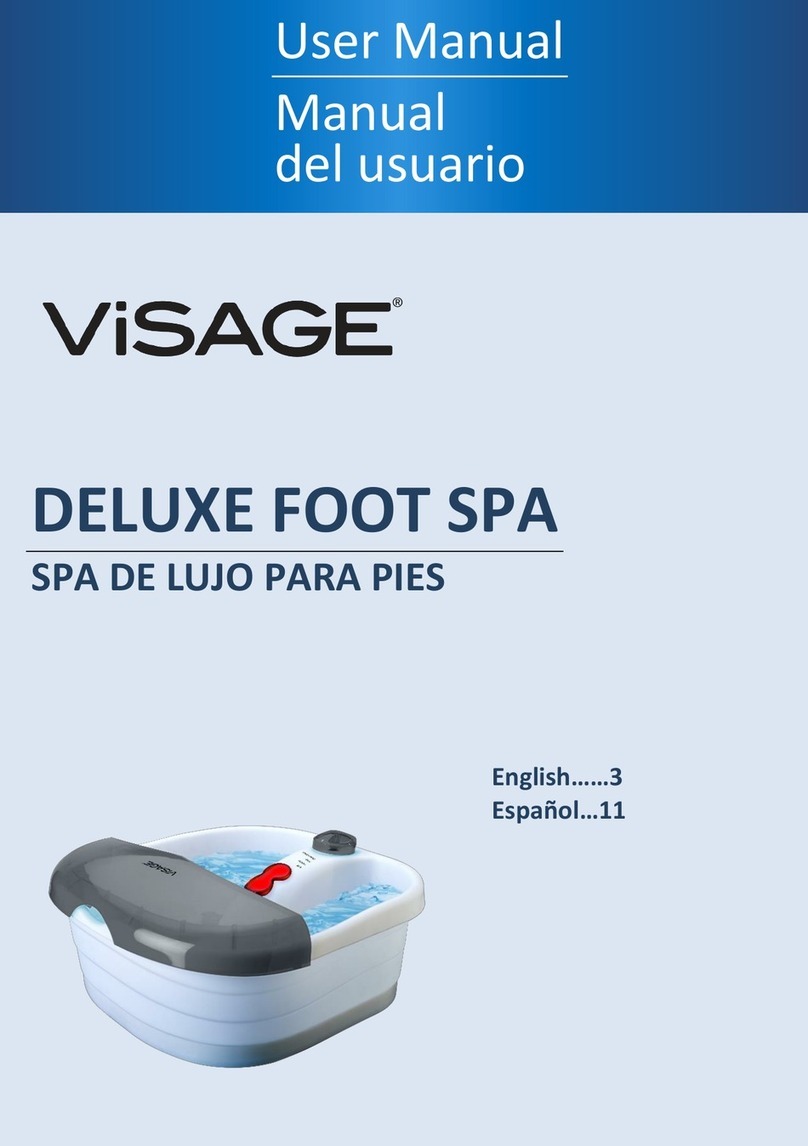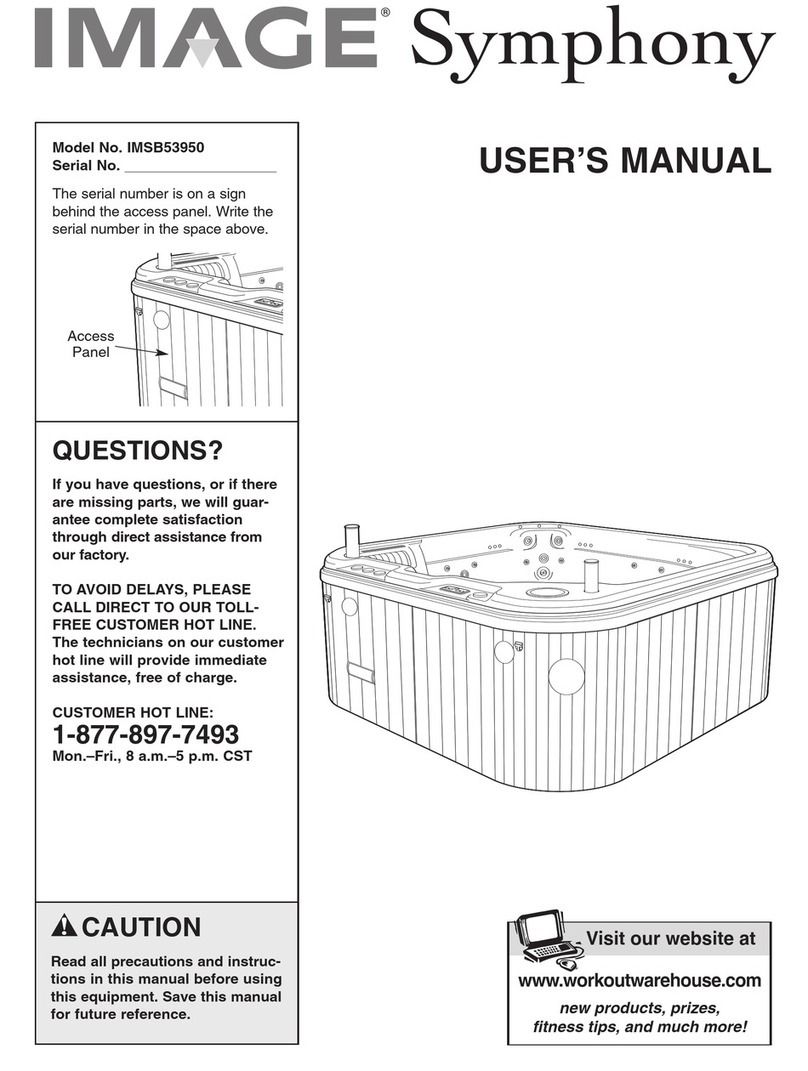
OPERATION
Operating Instructions
Nowthat yourPalio spais inplace,you areprobably eagerto takeadvantage ofits uniquedesigned-infeatures—
especiallythepatentedJacuzziWhirlpoolBathhydromassageperformance. Besidesbeingabeautifuladditiontoyour
indoor decor or outdoor landscaping, your Jacuzzi whirlpool spa will provide you with the ultimate in spa pleasure.
Basic Control Set-Up
The control set-up on your Palio spa is designed to give you fingertip control of the heater, air induction, light and
whirlpool, filter, and blower systems of your unit from inside or outside your spa. Follow the basic control set-up
described below to familiarize yourself with the several functions of the control panels located on the top of the spa.
CAUTION:Do not turn on power to the spa unless it is filled with water to the normal water level. (See water
line indicator mark on skimmer frame.) When the power is on, the built-in timer may activate the system even
though the SYSTEM is turned off at the control panel. If the spa’s motor/pump is actuated when there is not
sufficient water in the unit, the circulation pump and heater could be irreparably damaged. Not heeding this
caution will nullify the warranty. In addition to damaging the unit, operating the spa with insufficient water
could cause a fire.
•
•
•
•
•
•
•
SYSTEM CONTROL MODULE
7
Using a garden hose, fill the spa with water to the
water line indicator mark on the skimmer frame.
At the house service panel, turn on the circuit breaker
or switch that controls the electrical service to your
spa. (Make sure there is no other appliance on that
circuit.)
Open the skirt door giving access to the System
Control Module.
Your spa is provided with a ground fault circuit inter-
rupter (GFCI). At initial start-up and at least once a
month thereafter, with power on, push the test button
located on the System Control Module. The reset
button should pop out. Push this button in to reset. If
the interrupter fails to operate in this manner, there is
a ground current flowing or a device malfunctioning,
indicating the possibility of electric shock. Turn off
power and do not use the spa until the source of
the breakdown has been identified and corrected.
Makesurethecircuitprotectorbuttonsarepushedin.
LocatetheHIGHTEMPERATURESAFETYSWITCH,
whichisaraisedbuttonontheendoftheheater. Push
this button to be sure it is in the reset mode. The
purpose of this switch is to shut down the spa if the
water becomes excessively hot. If, for some reason,
theswitchistripped,theresetbuttonmustbepushed
in for the heater to operate again after the water has
cooled to about 90oF.
Set the built-in timer (see below). Use of the timer
allowstwomodesofoperation:timedHTR/FLTRand
timed FILTER ONLY. With the SYSTEM switch
turnedOFF and theHEATER knob setto the desired
temperature, the timer will activate the heater and
filterpumptooperateduringthetimeperiodsetonthe
timer. With the SYSTEM switch turned OFF and the
HEATER knob turned to its lowest setting, the water
will be filtered and the water temperature will be
maintained at the minimum temperature (approx. 50
degrees) during the time period set on the timer.
Close and latch the redwood skirt door.
HIGH TEMPERATURE SAFETY SWITCH
High temperatures above the thermostat range
will cause the high temperature safety switch to
trip and the system to turn off. See operating
instructions. When water temperature is less
than 100°F., reset by pressing the safety switch
reset button located on the cover of the heater
enclosure.
CAUTION: DO NOT BREAK DOOR SEAL;
OPENING DOOR VOIDS WARRANTY
THIS EQUIPMENT REQUIRES QUALIFIED SERVICE
PERSONNEL FOR PROPER REPAIR. CONTACTYOUR
JACUZZI WHIRLPOOL BATH DEALER FOR SERVICE.
NO USER SERVICABLE PARTS BEHIND THIS DOOR.
CAUTION
This system is GFCI (Ground Fault Circuit Interrupter) pro-tected for your
safety. Bypassing the GFCI or tampering with the system in any way may
cause electrical shock, in-jury or death and will void the warranty. GFCI
protection does not extend to 230 VAC circuit conversion. If test indi-cates
that the GFCI is not functioning, DO NOT USE THE UNIT until the electrical
problem has been corrected. (See installation instructions.) TEST THE GFCI
ONCE A MONTH.
TEST PROCEDURE
Unit must be filled to proper water level and correct power supplied.
1. Push TEST button of GFCI.
2. RESET button should pop out. This should cut off power
to the system. CAUTION: if RESET button does not
pop out, or if RESET button does pop out and system
is still on, DO NOT USE YOUR SPA.
3. If the GFCI tests okay, restore power by pushing in the
reset button. The RESET button must be pushed until
it locks into place and remains depressed.
IF THE GFCI FAIL TORESET PROPERLY,DO NOT USE
THE SPA! CONTACT A QUALIFIED ELECTRICIAN.
FLOW
SWITCH
TEMP.
SAFETY
SWITCH
INTERLOCK
SWITCH
LIGHT #1
LIGHT #2
M
o
n
d
a
y
T
u
e
s
d
a
y
W
e
d
n
e
s
d
a
y
T
h
u
r
s
d
a
y
F
r
i
d
a
y
S
a
t
u
r
d
a
y
S
u
n
d
a
y
Turn dial to correct time and day. Slide tabs
toward center for desired operating periods.
(One tab = 2 hrs.)
HEATER
BLOWER
JETS
MOTOR/
PUMP
FILTER
MOTOR/
PUMP
GFCI
TIMER
PLUG-IN
C0NNECTORS
FIELD WIRING BOX
(System Control Module P/N 876000
IMPORTANT: THIS UNIT IS FACTORYWIRED FOR USE
ON 115 VAC 30 AMP (3 WIRE) CIRCUIT ONLY.
Converting the electrical system to 230 VAC requires
a 4 wire 230 VAC 50Amp circiut breaker; refer to the
instructions on the rear of this cover. The conversion
should be done by a qualified electrician.
REFER TO N.E.C. (NATIONAL ELECTRIC CODE AND
LOCAL CODES)
115 VAC ONLY
WHIRLPOOL
BATH
RJUNCTION
BOX
CUIRCUIT BREAKERS
CIRCUIT
PROTECTOR
BUTTONS
•
